-
 Bitcoin
Bitcoin $116800
1.37% -
 Ethereum
Ethereum $3832
5.15% -
 XRP
XRP $3.063
2.69% -
 Tether USDt
Tether USDt $1.000
0.04% -
 BNB
BNB $774.1
0.84% -
 Solana
Solana $170.7
1.56% -
 USDC
USDC $0.0000
0.01% -
 Dogecoin
Dogecoin $0.2142
5.31% -
 TRON
TRON $0.3406
1.90% -
 Cardano
Cardano $0.7635
3.81% -
 Hyperliquid
Hyperliquid $39.55
2.42% -
 Sui
Sui $3.732
7.71% -
 Stellar
Stellar $0.4127
4.25% -
 Chainlink
Chainlink $17.80
6.91% -
 Bitcoin Cash
Bitcoin Cash $576.7
1.66% -
 Hedera
Hedera $0.2521
3.28% -
 Ethena USDe
Ethena USDe $1.001
0.01% -
 Avalanche
Avalanche $22.66
2.19% -
 Litecoin
Litecoin $121.3
2.98% -
 UNUS SED LEO
UNUS SED LEO $8.959
-0.31% -
 Toncoin
Toncoin $3.325
2.88% -
 Shiba Inu
Shiba Inu $0.00001263
2.84% -
 Uniswap
Uniswap $10.11
4.79% -
 Polkadot
Polkadot $3.769
3.22% -
 Dai
Dai $1.000
0.01% -
 Bitget Token
Bitget Token $4.413
1.46% -
 Monero
Monero $272.9
-4.98% -
 Cronos
Cronos $0.1488
4.22% -
 Pepe
Pepe $0.00001088
4.01% -
 Aave
Aave $273.0
4.73%
How much is the handling fee for Crypto.com contract? Are the Maker and Taker rates the same?
Crypto.com's tiered fee structure rewards higher trading volumes with lower Maker and Taker fees, starting at 0.05% and 0.07% for Tier 1, down to 0% and 0.01% for Tier 10.
May 06, 2025 at 03:35 pm
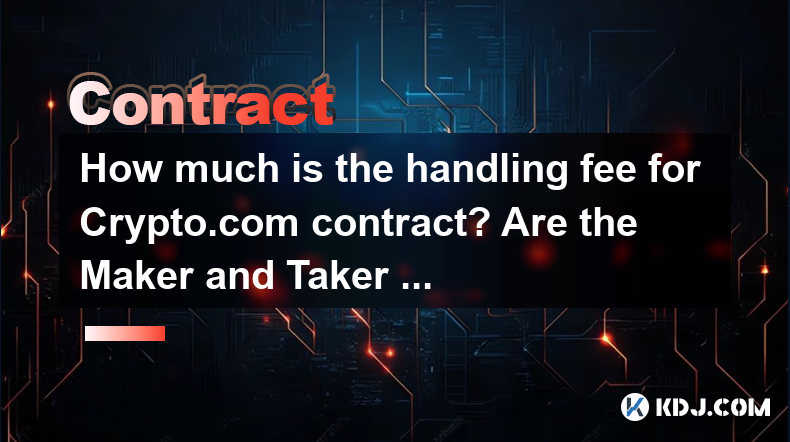
Crypto.com is a well-known platform in the cryptocurrency industry, offering a range of services including trading, staking, and lending. One of the essential aspects that users often consider before engaging with a platform is the handling fees, particularly for futures and perpetual contracts. In this article, we will delve into the specifics of the handling fees for Crypto.com contracts, focusing on the differences between Maker and Taker rates.
Understanding Crypto.com Contract Fees
When it comes to trading on Crypto.com, users need to be aware of the fees associated with executing trades. These fees are categorized into two types: Maker fees and Taker fees. Maker fees are charged when a user adds liquidity to the order book by placing an order that does not immediately get filled. Taker fees, on the other hand, are charged when a user removes liquidity from the order book by placing an order that gets filled immediately.
Crypto.com Maker and Taker Fee Structure
Crypto.com has a tiered fee structure based on the user's trading volume over a 30-day period. This structure aims to reward users who trade more frequently with lower fees. Below is a detailed breakdown of the Maker and Taker fees for different trading volume tiers:
- Tier 1 (0 - 25,000 USD): Maker Fee: 0.05%, Taker Fee: 0.07%
- Tier 2 (25,001 - 50,000 USD): Maker Fee: 0.04%, Taker Fee: 0.06%
- Tier 3 (50,001 - 100,000 USD): Maker Fee: 0.03%, Taker Fee: 0.05%
- Tier 4 (100,001 - 250,000 USD): Maker Fee: 0.02%, Taker Fee: 0.04%
- Tier 5 (250,001 - 500,000 USD): Maker Fee: 0.015%, Taker Fee: 0.035%
- Tier 6 (500,001 - 1,000,000 USD): Maker Fee: 0.01%, Taker Fee: 0.03%
- Tier 7 (1,000,001 - 2,500,000 USD): Maker Fee: 0.005%, Taker Fee: 0.025%
- Tier 8 (2,500,001 - 5,000,000 USD): Maker Fee: 0.00%, Taker Fee: 0.02%
- Tier 9 (5,000,001 - 10,000,000 USD): Maker Fee: 0.00%, Taker Fee: 0.015%
- Tier 10 (10,000,001+ USD): Maker Fee: 0.00%, Taker Fee: 0.01%
As you can see, the Maker and Taker rates are not the same. Maker fees are generally lower than Taker fees across all tiers, reflecting the platform's incentive to encourage users to add liquidity to the market.
How to Check Your Trading Volume on Crypto.com
To understand which fee tier you fall into, you need to check your trading volume on Crypto.com. Here’s how you can do it:
- Log into your Crypto.com account.
- Navigate to the 'Trading' section.
- Click on 'Order History' or 'Trade History'.
- Look for the total trading volume over the past 30 days.
This will give you an idea of your current tier and the corresponding Maker and Taker fees you will be charged.
Strategies to Minimize Fees on Crypto.com
Given the difference between Maker and Taker fees, users can employ certain strategies to minimize their trading costs. Here are some effective methods:
- Use Limit Orders: Placing limit orders instead of market orders can help you act as a Maker more often, thus benefiting from lower fees.
- Increase Trading Volume: By increasing your trading volume, you can move up the fee tiers and enjoy lower rates.
- Utilize Crypto.com's CRO Token: Holding and using Crypto.com's native token, CRO, can provide additional fee discounts.
Comparing Crypto.com Fees with Other Platforms
It's also useful to compare Crypto.com's fees with those of other popular cryptocurrency exchanges. Here’s a brief comparison:
- Binance: Maker Fee: 0.02% - 0.1%, Taker Fee: 0.04% - 0.1%
- Coinbase Pro: Maker Fee: 0% - 0.5%, Taker Fee: 0.04% - 0.6%
- Kraken: Maker Fee: 0% - 0.16%, Taker Fee: 0.1% - 0.26%
While Crypto.com's fees are competitive, especially at higher trading volumes, users should consider other factors such as the platform's user interface, security features, and available trading pairs when choosing where to trade.
Additional Costs to Consider
Apart from the Maker and Taker fees, there might be other costs associated with trading on Crypto.com. These can include:
- Withdrawal Fees: Depending on the cryptocurrency, there may be fees for withdrawing funds from your Crypto.com account.
- Deposit Fees: Some cryptocurrencies might have deposit fees, although these are less common.
- Network Fees: When transferring cryptocurrencies, you may need to pay network fees, which are not controlled by Crypto.com but by the blockchain network itself.
Understanding these additional costs can help you better manage your trading expenses on the platform.
Frequently Asked Questions
Q: Can I reduce my fees by holding CRO tokens on Crypto.com?
A: Yes, holding CRO tokens can provide you with additional fee discounts on Crypto.com. The more CRO you hold, the higher the discount you can receive on your trading fees.
Q: Are there any special promotions or events that can affect the fees on Crypto.com?
A: Crypto.com occasionally runs promotions and events that can offer reduced fees or other benefits. It's a good idea to keep an eye on their official announcements and social media channels to stay updated on any such opportunities.
Q: How often does Crypto.com update its fee structure?
A: Crypto.com reviews and updates its fee structure periodically. While there is no fixed schedule for these updates, they typically occur in response to market conditions or platform developments. Users should check the official fee page regularly for any changes.
Q: Is there a way to calculate the exact fee I will be charged before placing a trade on Crypto.com?
A: Yes, Crypto.com provides a fee calculator tool within its trading interface. Before placing a trade, you can use this tool to estimate the fees based on your current tier and the type of order you are placing.
Disclaimer:info@kdj.com
The information provided is not trading advice. kdj.com does not assume any responsibility for any investments made based on the information provided in this article. Cryptocurrencies are highly volatile and it is highly recommended that you invest with caution after thorough research!
If you believe that the content used on this website infringes your copyright, please contact us immediately (info@kdj.com) and we will delete it promptly.
- Ripple, Rail, and Stablecoin Payments: A $200M Power Play
- 2025-08-07 22:50:12
- Punisher Coin Presale: The Next $Trump? Aiming for 100x Gains!
- 2025-08-07 22:50:12
- Riding the Crypto Wave: Presale Cryptos, Cold Wallets, and the BTC Bull Run
- 2025-08-07 23:10:12
- Crypto's Wild Ride: Punisher Coin, Popcat, and the Meme Coin Mania
- 2025-08-07 23:10:12
- Bitcoin Price, XRP Prediction, Cryptocurrency: Navigating the Wild West of Digital Assets
- 2025-08-07 23:15:12
- WiMi, Quantum Computing, and AR Tech: Navigating the Future Today
- 2025-08-07 22:30:12
Related knowledge
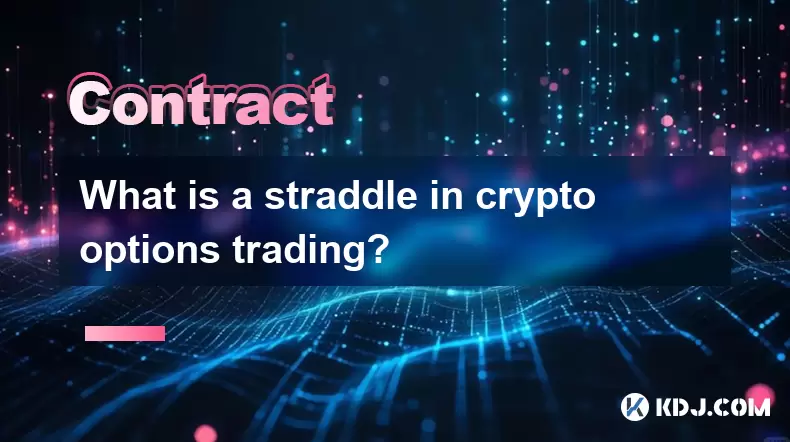
What is a straddle in crypto options trading?
Aug 07,2025 at 11:15pm
Understanding the Basics of a Straddle in Crypto OptionsA straddle is an options trading strategy used when a trader expects significant price movemen...
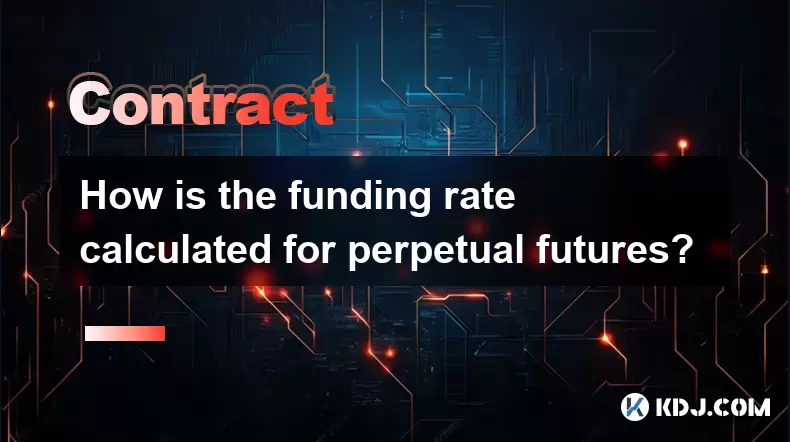
How is the funding rate calculated for perpetual futures?
Aug 07,2025 at 11:36pm
Understanding the Basics of Perpetual FuturesPerpetual futures are a type of derivative contract that does not have an expiration date, allowing trade...

What programming languages are used for smart contracts?
Aug 07,2025 at 06:07pm
Understanding Smart Contracts and Their Execution EnvironmentSmart contracts are self-executing programs deployed on blockchain networks that automati...
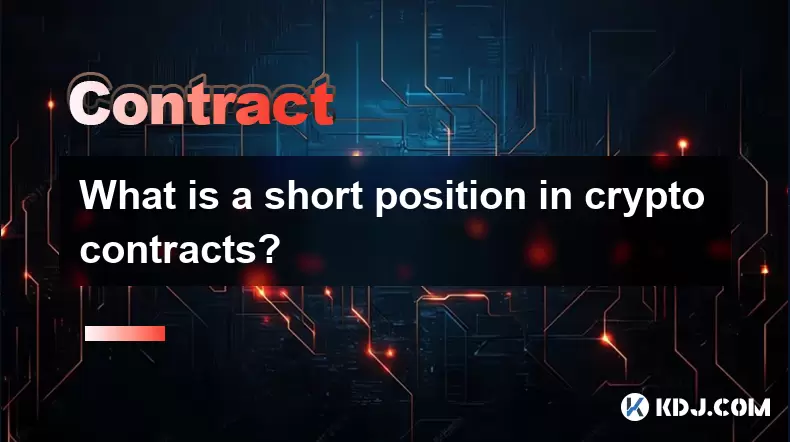
What is a short position in crypto contracts?
Aug 07,2025 at 11:42pm
Understanding the Concept of a Short Position in Crypto ContractsA short position in crypto contracts refers to a trading strategy where a trader prof...
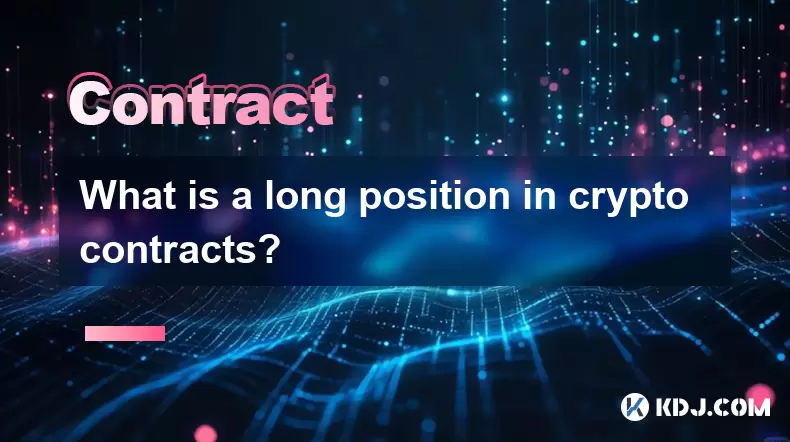
What is a long position in crypto contracts?
Aug 07,2025 at 06:29pm
Understanding the Concept of a Long Position in Crypto ContractsA long position in crypto contracts refers to a trading strategy where a trader buys a...

Why is my Bitstamp futures position being liquidated?
Jul 23,2025 at 11:08am
Understanding Futures Liquidation on BitstampFutures trading on Bitstamp involves borrowing funds to open leveraged positions, which amplifies both po...

What is a straddle in crypto options trading?
Aug 07,2025 at 11:15pm
Understanding the Basics of a Straddle in Crypto OptionsA straddle is an options trading strategy used when a trader expects significant price movemen...

How is the funding rate calculated for perpetual futures?
Aug 07,2025 at 11:36pm
Understanding the Basics of Perpetual FuturesPerpetual futures are a type of derivative contract that does not have an expiration date, allowing trade...

What programming languages are used for smart contracts?
Aug 07,2025 at 06:07pm
Understanding Smart Contracts and Their Execution EnvironmentSmart contracts are self-executing programs deployed on blockchain networks that automati...

What is a short position in crypto contracts?
Aug 07,2025 at 11:42pm
Understanding the Concept of a Short Position in Crypto ContractsA short position in crypto contracts refers to a trading strategy where a trader prof...

What is a long position in crypto contracts?
Aug 07,2025 at 06:29pm
Understanding the Concept of a Long Position in Crypto ContractsA long position in crypto contracts refers to a trading strategy where a trader buys a...

Why is my Bitstamp futures position being liquidated?
Jul 23,2025 at 11:08am
Understanding Futures Liquidation on BitstampFutures trading on Bitstamp involves borrowing funds to open leveraged positions, which amplifies both po...
See all articles

























































































